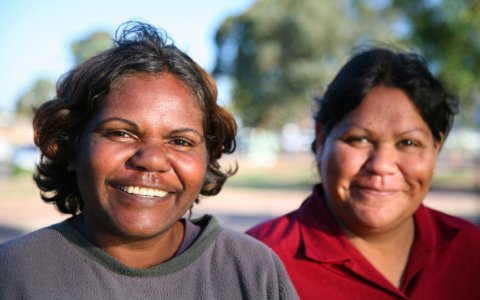Strong partnerships lead to better Indigenous interventions
Researchers and policy makers must forge meaningful partnerships with Aboriginal and Torres Strait Islander (Indigenous) communities if alcohol and drug initiatives are to succeed, a national conference has heard.
Two experts in Aboriginal health dissected the issues facing Aboriginal communities and the interventions designed to reduce the burden of substance use at the 2016 NDARC Symposium, held in September.
Professor Kate Conigrave, an addiction medicine specialist at Royal Prince Alfred Hospital, and Scott Wilson, Director of the Aboriginal Drug and Alcohol Council, South Australia, delivered a joint keynote that shed light on why many initiatives are falling short of their aims.
One of the main hurdles, they claimed, was limited number of meaningful partnerships between those informing and delivering government initiatives and the Indigenous communities themselves.
The key message to attendees of the Symposium, many of whom were clinicians and researchers, was to deepen collaboration with Indigenous communities, which would result in more effective alcohol and drug action.
The speakers also highlighted other challenges contributing to alcohol and drug misuse in these communities, including intergenerational trauma, overuse of prison as a solution, politically-driven decision making resulting in short-term initiatives, and commercial factors, such as early opening times for bottle shops.
Despite these challenges, Professor Conigrave and Mr Wilson noted various signs of progress, including growing awareness of Fetal Alcohol Spectrum Disorders (FASD), particularly in the north of Australia, and a decline in the prevalence of daily smoking.
The unique opportunities provided by community-controlled health services were highlighted, where screening for alcohol is now a KPI and where treatment options, such as home detox and alcohol pharmacotherapies, are now increasingly being applied.
Another encouraging factor is the professionalisation of the Aboriginal workforce. More than 80 per cent of AOD workers in NSW have Certificate III or higher qualification, and various efforts are being made to support and develop that workforce, including the Aboriginal Drug and Alcohol Network, NSW.
NDARC’s Professor Anthony Shakeshaft also spoke on this topic, reiterating the keynote’s main message that meaningful engagement with Indigenous communities is the key to reducing alcohol- and drug-related harms.
Other highlights of the Symposium were: the first release of the National Drug Trends findings for 2016, a preview of findings from the ground-breaking NOMAD study – the most detailed research ever conducted on pharmaceutical opioid use and tampering in Australia, and a session titled Current Controversies, featuring presentations on drug safety checking (pill testing) and over-the-counter supply of opioid antagonist naloxone.
The afternoon saw attendees branch out into breakout sessions, which covered a range of issues from treatment for methamphetamine psychosis to school-based drug prevention programs.
To close the event, NDARC hosted networking drinks.












